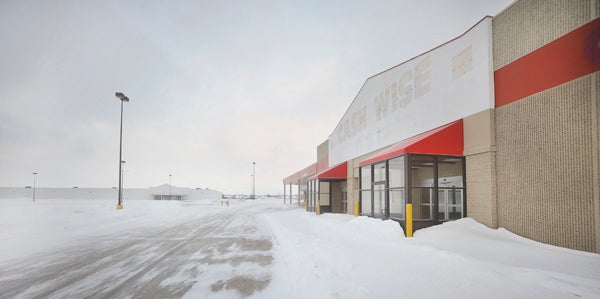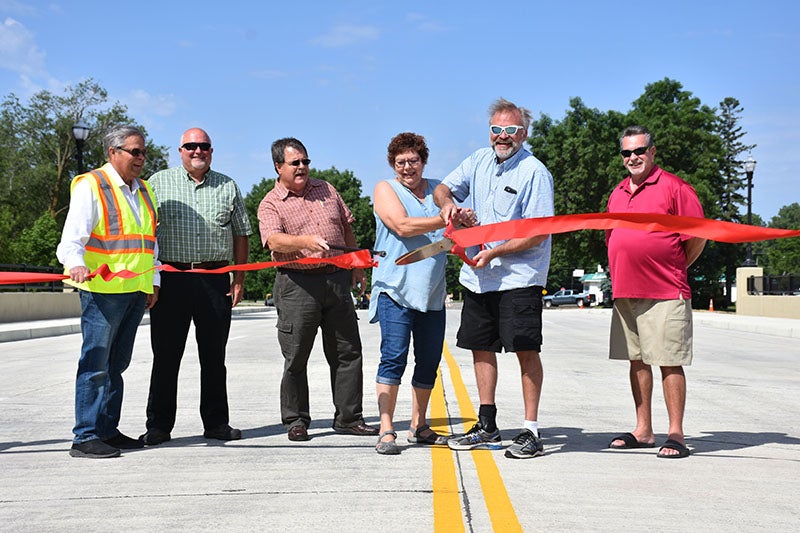Some optimism for 2011
Published 7:00 pm Saturday, January 15, 2011

With recent development along 18th Avenue NW there are still the empty reminders of Cash Wise and K-Mart and questions regarding what will become of the businesses. - Eric Johnson/photodesk@austindailyherald.com
Vacant buildings that once housed big box retailers and grocery stores serve as a reminder to Austin that the community didn’t entirely escape the devastating impacts of the nationwide recession.
But if there’s some light at the end of the tunnel, community developers say 2011 might be the year the sun shines through.
In 2010, the community saw $20 million worth of community and business development spent in Austin. Major renovation projects such as the Holiday Inn, along with new retail space renovations like JoAnn Fabrics have contributed greatly to the year’s growth.
And while no one is complaining about the business projects of 2010, the Austin community is hoping for an improved year in 2011.
“From the people who have their finger on the pulse of the economy, I get the sense they’re optimistic, although they also would say don’t expect this 180 boom,” said John Garry, director of the Austin Development Corporation. “It will be a gradual recovery.”
A bright future
Already on the docket are large-scale retail developments in the building that formerly housed Cashwise and the location along 18th Avenue Northwest, which is being scoped out as the possible location of a strip mall.
Hoium said he’s not sure at this point what type of stores would be located in the potential strip mall, but he said it’s not likely a purchaser would look at the location without a good idea of who the tenants would be.
While the city has been approached by two separate entities interested in the area for strip malls, Community Development Coordinator Craig Hoium said one is now in the design aspects of the project.
The city’s broker has indicated the company interested in the former Cashwise building is close to signing a lease and has already hired an architectural firm to look at the building. But before the lease is signed, Hoium said no names are going to be announced.
Hoium said the broker, along with the city, has continued to actively market the locations.
In addition to those potential retail projects, Hoium said there are three other possible developments in the works.
“I know of three other very substantial projects that are scheduled for 2011, but I can’t disclose what those are,” he said.
When Kmart closed its doors in February of 2010, it left a huge eye sore right in the middle of Austin’s retail hub. Driving into town and first witnessing the empty building doesn’t exactly give visitors the idea that Austin is booming. But Hoium said that could change in the new year, as well.
“I know there have been some efforts with trying to market that to another big box retailer,” he said. “Various retailers were contacted and the last time talked to the broker, there was a potential of half of the Kmart building being leased out.”
But beyond that, Hoium said there really aren’t any specifics. Until deals are finalized and names are announced, Austin residents are left wondering when — and if — the building will be occupied by a business that could cut down on the need of local residents to venture elsewhere for shopping desires.
The Development Corporation of Austin is in the process of forming a community initiative with other driving forces in Austin to expand on its mission of working with businesses and supporting businesses that are already here.
“Simply put, we have a vision to make Austin a great place to live and work, or a better place to live and work,” Garry said.
“We’re planning on a big year this year,” Hoium said. “If there’s an area that’s legging a little bit, it would be residential construction projects, but that is consistent throughout the whole country.”
In 2010, the city issued nine permits for single home construction — up from the previous year’s five permits. The hope is that number will also begin to increase and build up, though it’s largely dependent on the nationwide trends and overall economic success in Austin.





